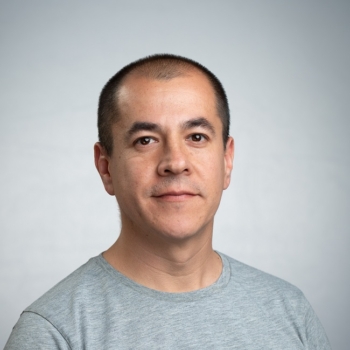Mapping the resilience of tropical forests and savannas to global environmental changeProject
Climate change effect on tropical forests
We are working on West Africa tropical forests to understand how a changing climate is modifying the structure, morphology and chemistry of tropical forests. Our focus up to know is Ghana where we, together with our local collaborators, work in vegetation plots located across a latitudinal and climatic gradients from the wet tropical forest to the savannas bordering Burkina Faso.

In each vegetation plots we are collecting information about the identity and abundance of trees and their size. Moreover we are collecting information about their functional traits such as leaf size and area, thickness, wood density and photosynthetic capacity, chemistry and hydraulic traits information. On top of this, we are mapping the landscape where each plot is located using UAVs (unmanned aerial vehicles) with spectral and LiDAR (light detection and ranging) sensors that deliver extremely high accuracy information on the reflectance signatures of the tree individuals and their structure.
We are collaborating with other organisations such as Planet Labs to Improve satellite technology and its products based on our ecological analysis and outputs. The Scale/Remote Sensing package within the Leverhulme Centre for Nature Recovery (LCNR) is tightly linked to all other themes where we are working into scaling up, across space and time, the ecological, social and economic findings.
Specially within the ‘Ecology’ theme we are working together to understand how the diversity of plant species reflects the species and their functional traits across gradients of human modification in tropical forests.
Within the ‘Social’ theme we are working together to understand the role that the social context in cocoa farms in West plays for determining the status of forest ecosystems that are immersed in agricultural matrices.
If you are curious and want to know more about our work, visit our website and feel free to contact me directly.
Read more about this project and ‘Mapping nature recovery at scale‘.
Project outputs
- Society
- Scale and Technology
- Remote sensing
- Society
- Scale and Technology
- Remote sensing
- Scale and Technology
- Remote sensing
- Scale and Technology
- Remote sensing
- Scale and Technology
- Remote sensing
- Scale and Technology
- Remote sensing
- Scale and Technology
- Remote sensing
Zhang-Zheng H; Adu-Bredu S; Duah-Gyamfi A; Moore S; Addo-Danso SD; Amissah L; Valentini R; Djagbletey G; Anim-Adjei K; Quansah J (2024). Contrasting carbon cycle along tropical forest aridity gradients in West Africa and Amazonia.. Nature communications.
Tropical forests cover large areas of equatorial Africa and play a substantial role in the global carbon cycle. However, there has been a lack of biometric measurements to understand the forests’ gross and net primary productivity (GPP, NPP) and their allocation. Here we present a detailed field assessment of the carbon budget of multiple forest sites in Africa, by monitoring 14 one-hectare plots along an aridity gradient in Ghana, West Africa. When compared with an equivalent aridity gradient in Amazonia, the studied West African forests generally had higher productivity and lower carbon use efficiency (CUE).
Huanyuan Zhang-Zheng, Stephen Adu-Bredu, Akwasi Duah-Gyamfi, Sam Moore, Shalom D. Addo-Danso, Lucy Amissah, Riccardo Valentini, Gloria Djagbletey, Kelvin Anim-Adjei, John Quansah, Bernice Sarpong, Kennedy Owusu-Afriyie, Agne Gvozdevaite, Minxue Tang, Maria C. Ruiz-Jaen, Forzia Ibrahim, Cécile A. J. Girardin, Sami Rifai, Cecilia A. L. Dahlsjö, Terhi Riutta, Xiongjie Deng, Yuheng Sun, Iain Colin Prentice, Imma Oliveras Menor & Yadvinder Malhi (2024). Contrasting carbon cycle along tropical forest aridity gradients in West Africa and Amazonia. Nature Communications.
Here we present a detailed field assessment of the carbon budget of multiple forest sites in Africa, by monitoring 14 one-hectare plots along an aridity gradient in Ghana, West Africa. When compared with an equivalent aridity gradient in Amazonia, the studied West African forests generally had higher productivity and lower carbon use efficiency (CUE). The West African aridity gradient consistently shows the highest NPP, CUE, GPP, and autotrophic respiration at a medium-aridity site, Bobiri. Notably, NPP and GPP of the site are the highest yet reported anywhere for intact forests. Widely used data products substantially underestimate productivity when compared to biometric measurements in Amazonia and Africa. Our analysis suggests that the high productivity of the African forests is linked to their large GPP allocation to canopy and semi-deciduous characteristics.
Jesús Aguirre-Gutiérrez, Nicola Stevens, Erika Berenguer (2023). Valuing the functionality of tropical ecosystems beyond carbon. Trends in Ecology & Evolution.
Land-based carbon sequestration projects, such as tree planting, are a prominent strategy to offset carbon emissions. However, we risk reducing natural ecosystems to one metric – carbon. Emphasis on restoring ecosystems to balance ecosystem services, biodiversity conservation, and carbon sequestration is a more appropriate strategy to protect their functioning.




